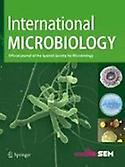Elisabet aranda, from the University of Granada, has presented his research on fungi for the bioremediation of contaminated environments. Emerging pollutants represent a group of substances widely distributed in the environment. Most of them resist microbial degradation and their effects on living organisms are still unknown. Fungi represent the most abundant biomass in soils and have very versatile bioremediation capabilities. In addition to being one of the key drivers in ecosystems, its contribution to the decomposition and recycling of nutrients, and its well-documented ability to transform large amounts of xenobiotic compounds (non-natural compounds of artificial chemical synthesis), make them very suitable microorganisms for the recovery of contaminated soils and waters.
Different investigations have been presented in which fungal communities from different natural environments have been isolated, selected and identified with cultivable techniques and massive sequencing. One of the most interesting examples has been obtaining strains of Penicillium from waste water from cleaning ships and ships. Different strains with the capacity to biodegrade or biotransform emerging contaminants, such as some residual drugs in hospital waters, have been selected and identified. In vitro experiments showed that these strains were capable of degrading non-steroidal anti-inflammatory drugs such as ibuprofen or naproxen. The culture medium was optimized for large-scale use in bioreactors under real-world conditions (with hospital wastewater in which a large amount of aspirin, ibuprofen, and other drugs had been detected). It was shown that the strains of Penicillium They were capable of displacing other communities of fungi and bacteria present in the sample and that completely degraded many of the contaminating drugs in the water in a few hours. These results demonstrate the great potential of native microorganisms from contaminated environments for use in real bioremediation processes.
Summary prepared by Ignacio López-Goñi, from the University of Navarra.





No comment yet, add your voice below!